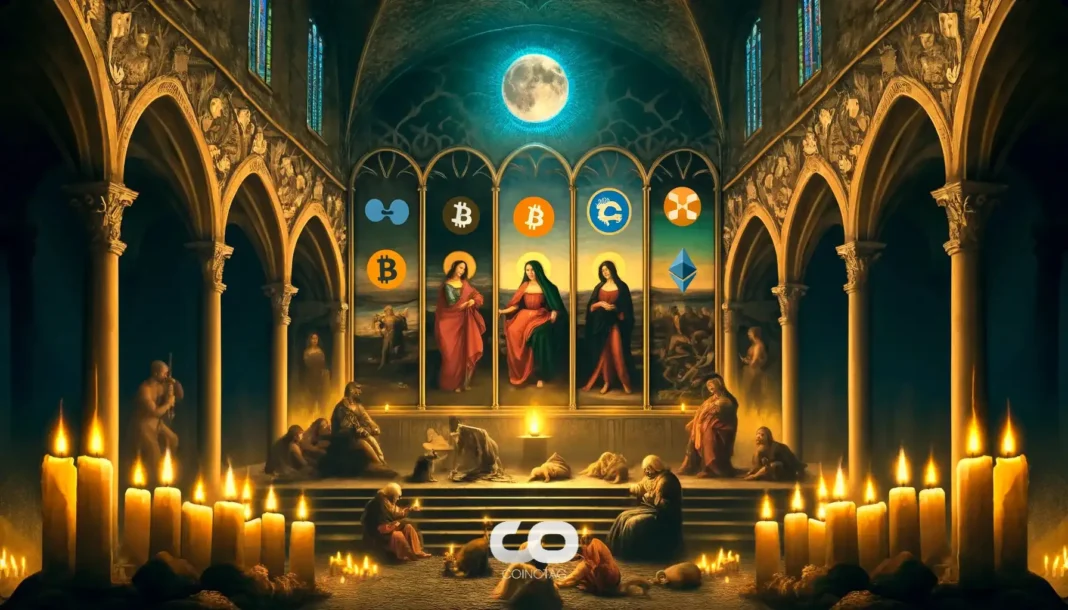-
The Bitcoin community is currently embroiled in a significant debate over the influence of Bitcoin Core, the dominant software client, with concerns rising about its potential risks to the network’s decentralization and innovation.
-
Key figures like Samson Mow and James O’Beirne highlight the challenges of switching away from Bitcoin Core due to its entrenched position, sparking discussions about governance and control within the Bitcoin ecosystem.
-
According to COINOTAG sources, this controversy intensified following a proposal to increase the OP_RETURN data limit, revealing deeper tensions about Bitcoin’s future direction and the balance between innovation and security.
Bitcoin Core’s dominance sparks debate over network risks and governance, as experts weigh in on the implications of recent technical proposals and client adoption.
Bitcoin Core’s Dominance: A Double-Edged Sword for Network Stability and Innovation
The ongoing debate surrounding Bitcoin Core centers on its overwhelming influence within the Bitcoin ecosystem. As the primary software client used by the majority of nodes, Bitcoin Core has become synonymous with network consensus and security. However, this dominance also creates a significant barrier for alternative implementations, raising concerns about centralization risks. Samson Mow, former Blockstream CSO and current CEO of JAN3, has publicly warned that Bitcoin Core’s entrenched position could pose a risk to Bitcoin’s long-term resilience. The complexity and trust vested in Bitcoin Core discourage businesses and node operators from exploring other clients, despite the availability of viable alternatives like Bitcoin Knots. This “sticky power” effect limits diversity in the network’s software landscape, potentially stifling innovation and increasing systemic vulnerability.
Governance Challenges and the OP_RETURN Proposal Controversy
The debate intensified following a technical proposal to remove the 83-byte limit on the OP_RETURN field, which allows users to embed data in Bitcoin transactions. Proponents argue that lifting this restriction fosters innovation by enabling more complex applications and data storage on the blockchain. Critics, however, fear that such changes could lead to blockchain bloat, increased transaction costs, and a departure from Bitcoin’s core function as a peer-to-peer monetary system. This disagreement underscores a broader governance dilemma: who should have the authority to steer Bitcoin’s development? The controversy reveals the tension between maintaining Bitcoin’s security and embracing technological evolution, with Bitcoin Core’s development team at the center of this governance debate.
Alternative Clients and the Push for Decentralized Control
In response to concerns about Bitcoin Core’s dominance, alternative clients like Bitcoin Knots have gained traction among a subset of users seeking greater decentralization and flexibility. Bitcoin Knots offers features and updates that differ from Bitcoin Core, appealing to those who advocate for a more pluralistic software ecosystem. This shift highlights a growing desire within the community to diversify control and reduce reliance on a single client. However, widespread adoption of alternative clients remains limited due to the high switching costs and the risk-averse nature of businesses that prioritize network stability. The emergence of these alternatives is a critical development in the ongoing governance discourse, emphasizing the need for a balanced approach that safeguards Bitcoin’s integrity while encouraging innovation.
Implications for Bitcoin’s Future and User Sovereignty
The conversation around Bitcoin Core and client diversity ultimately touches on the principle of user sovereignty—a foundational ethos of the Bitcoin network. While figures like Jameson Lopp advocate for a mindset where users “just do things” without seeking permission, others caution that practical realities complicate this ideal. The dominance of Bitcoin Core means that users and businesses face significant hurdles if they wish to diverge from the status quo. This dynamic challenges the notion of absolute sovereignty and raises important questions about how governance structures can evolve to empower users without compromising security. The resolution of these issues will shape Bitcoin’s trajectory in the years to come.
Conclusion
The debate over Bitcoin Core’s role in the network highlights critical tensions between stability, innovation, and governance within the Bitcoin ecosystem. While Bitcoin Core provides a trusted foundation, its dominance presents risks related to centralization and reduced client diversity. The controversy sparked by the OP_RETURN proposal and the rise of alternative clients like Bitcoin Knots reflect a community grappling with how to balance these competing priorities. Moving forward, fostering a more inclusive governance model that encourages innovation while maintaining security will be essential for Bitcoin’s sustained success and the realization of true user sovereignty.







